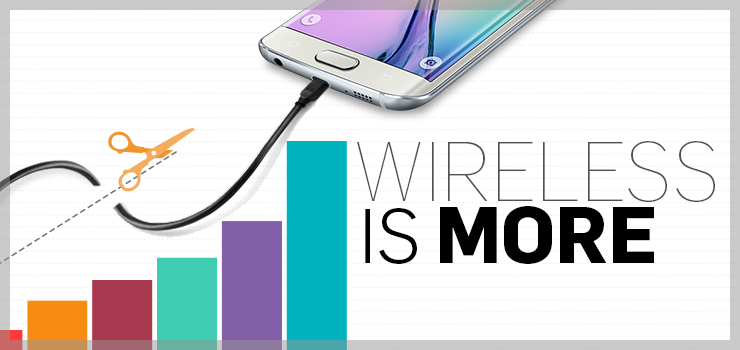The following piece, released in March 2015, was drafted as a sort of “wireless charging 101” for our customers interested in the technology. Until the recent announcement that Apple’s latest phones (iPhone X, iPhone 8, iPhone 8 Plus) have the ability to be charged wirelessly, this segment of the market was largely overlooked. Something big and bold needed to happen to change that, and you don’t get much bigger and bolder than Apple embracing a standard!
Use this piece to educate yourself on wireless charging and the various standards. Once you’re ready to embrace the wireless future, we urge you to check out all of the solutions we offer:
There’s a dirty little secret in the mobile industry: It’s not truly mobile. Mobile products were supposed to emancipate us from umbilical-like phone cords and let us go anywhere at any time. That didn’t happen, and while we’re at it, what happened to flying cars and laser guns? The future has been a bust so far, but we digress. The mobile industry could be more accurately labeled as partially mobile. The problem being these wondrous devices require a lot of juice, and if they run out they’re about as useful as shards is of crumbling brick. Sure, there are battery cases and tangled webs of wall and car charger wires, but is this the mobile future we all expected? There has to be a better way, and perhaps there already is.
Wireless charging, such as Qi (pronounced CHEE – NOT QUE-EYE – coming from the Chinese word “natural energy.”) and Powermat, are wireless charging standards introduced several years back that haven’t been widely embraced. Part of the reason, as Yahoo Tech explains, is due to conflicting standards. “Wireless charging is a decent idea that’s been held back for years by double and sometimes triple or quadruple vision: Instead of picking one standard that works well enough, the industry has fragmented itself among competing, incompatible implementations that may each flop and leave buyers stuck with useless hardware. Yes, you’ve seen this format-war movie before… on Beta, Laserdisc, and HD-DVD.” In addition to this serious roadblock to growth, “The Wireless Power Consortium, the trade group behind the specification, cites 79 phones that are compatible. But none of these 79 phones has been a flagship model you could expect to find sold by all four major U.S. wireless carriers, or bought by millions of shoppers.” But as Yahoo Tech points out, this will change once Samsung’s Galaxy S6 and S6 edge are released. Galaxy S6 and S6 edge will support both Qi and Powermat standards, giving the wireless charging market its most legitimate chance to grow.
And speaking of growth, according to a press release from MarketsandMarkets, “The wireless charging market is estimated to reach $13.78 Billion by 2020, growing at a CAGR of 60.26% between 2014 and 2020.” While the report goes beyond wireless charging for smartphones, the positive forecast coupled with Samsung’s support of Qi and Powermat for S6 and S6 edge are signs of a promising, up and coming market. Samsung and its flagship products have clearly influenced the market, so it’s safe to assume if this gamble pays off the floodgates will officially open.
But you don’t have to wait until 2020 to sell wireless charging products. We currently offer three Qi-compatible devices: Belkin’s Qi Wireless Charging Pad, and Incipio’s Ghost 100 Qi Wireless Charging Base and Ghost 120 Qi Wireless Charging Base. We’re sure Samsung Galaxy S6 and S6 edge owners will be clamoring for these while iPhone fans rethink their allegiance to the little fruit company in Cupertino. Innovative products from the likes of Belkin and Incipio are helping to ensure smart devices are truly mobile.

